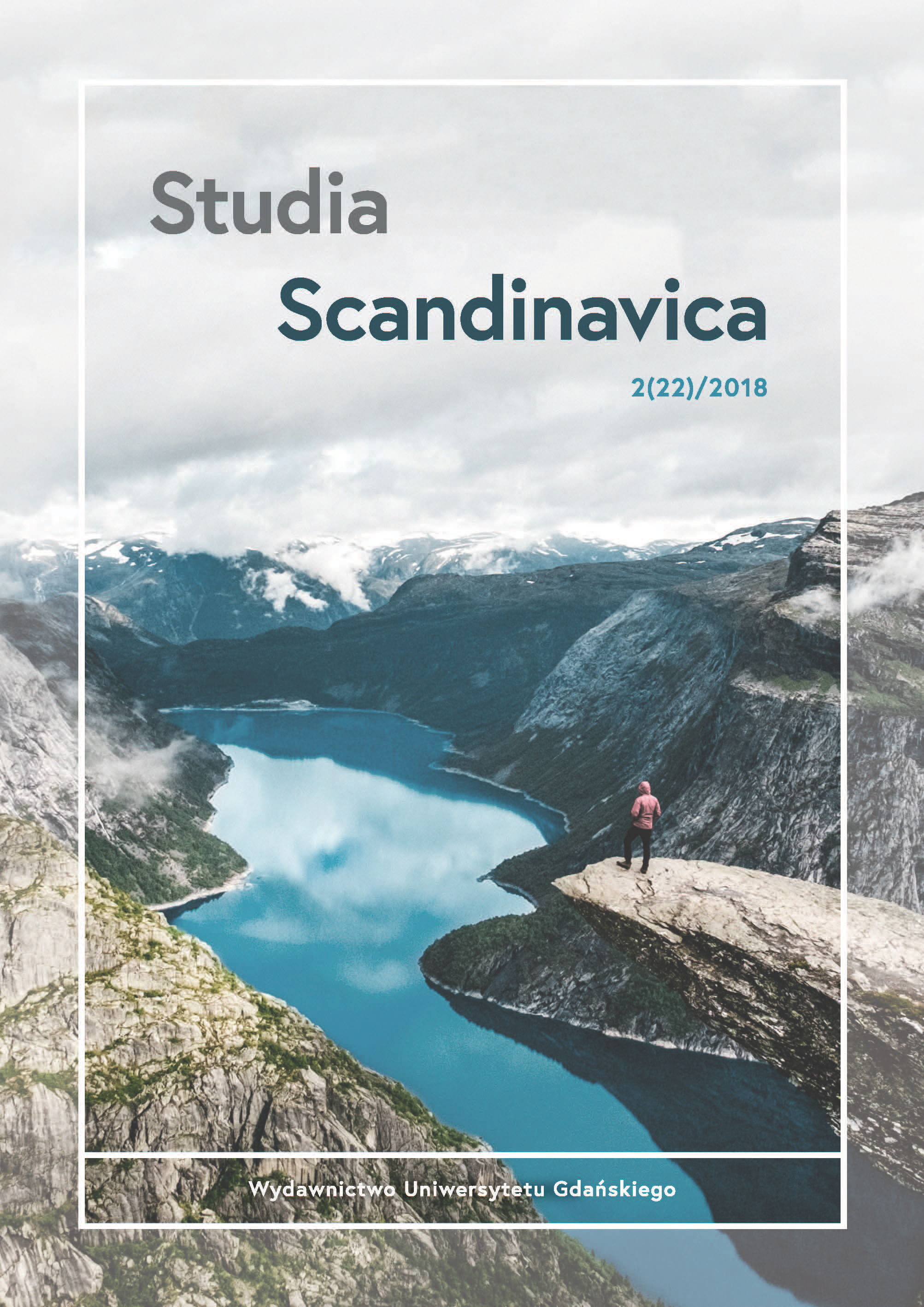«Og det er ikkje vits i å seie noko» – om Jon Fosses "Eg er vinden"
DOI:
https://doi.org/10.26881/ss.2018.22.06Słowa kluczowe:
Jon Fosse, norsk samtidsdramatikk, stillhet, postdramatisk teater, poetisk dramaAbstrakt
I Am the Wind is one of the last works Jon Fosse wrote for theatre. The piece was first staged during the Bergen Festival in 2007. Even though it was only a few years later that Fosse declared the end of his dramatic career, his playwriting with this play is clearly moving on its way out of the theatre and into a borderland between thought and action; it manifests an extremely subjective and the physical presence in which items from Fosse’s poetry are more clearly seen. In this article, I want to read I Am the Wind primarily as a theatre piece, that is, a text written for the stage, and emphasize the use of poetic elements. The piece’s sections of dialogue revolve around existential and individual psychological questions at the boundary of the banal; it thematizes both the need and the fear of loneliness. It also deals with nature’s magical attraction to humans and with the importance of silence on several levels. The work stages the death wish of late modern humanity, and provides lyrical and language-philosophical interpretations of this, which I wish to read into the apparently simple plot of the piece.
I Am the Wind can be described through a number of features that also characterize both earlier and later pieces of Fosse’s writing. Simply put, the play is about two people’s voyage to the open sea in a boat; one of the characters jumps overboard and commits suicide. The situation in the play takes place either in the head of the one who witnesses the suicide, or there is a meeting between the two characters after death. Either way, this is a basic situation which assumes that the expectations of a realistic stage action are to be set aside. But what is the reason why Fosse shifts his piece against a dramatic zero point? What is the purpose of reducing the stage expression to a lyrical outline that almost destroys the theatrical form? Fosse often opts for silent moments in his pieces. I Am the Wind is an infinite and enigmatic boat trip that requires us to look at the play as a landscape without being forced to define it in words: for the words disappear during the boat trip; they are taken and gone with the wind; “there is no point in saying anything.”

 Uniwersyteckie Czasopisma Naukowe
Uniwersyteckie Czasopisma Naukowe





